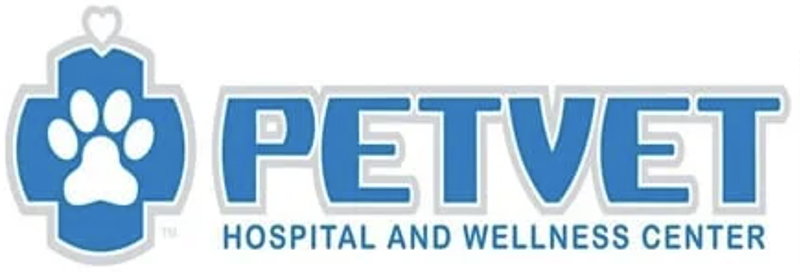Pet Vaccination at Pet Vet Hospital & Wellness Center in Spokane Valley, WA
Pet Vet Hospital and Wellness Center in Spokane Valley, WA, is your reliable choice for essential pet vaccinations. Our veterinary team recognizes the vital role vaccinations play in preventing diseases and ensuring your furry companions’ well-being.
Ensuring Wellness: The Vital Role of Vaccinations
Vaccination is a crucial aspect of pet care, playing a vital role in preventing the spread of infectious diseases among pets and protecting them from potentially life-threatening illnesses. By providing comprehensive pet vaccination services at Pet Vet Hospital and Wellness Center, we not only safeguard their health but also contribute to public health by preventing the transmission of diseases to other animals and even humans.
Pet vaccinations 101: What you need to know
Vaccines have become an emotional issue among pet owners. And while the science of pet vaccines is always a work in progress, there are some undeniable facts.
“No medical development has had a greater impact on the prevention of diseases and general health of people and animals than the development of vaccines against various diseases,” says Michael Paul, DVM, past president of the American Animal Hospital Association (AAHA), and frequent vaccine task force advisor.
Animal vaccines help to control diseases, many of which can affect people. At the top of the list is rabies. On WGN radio, Cook County Administrator of Rabies Control Donna Alexander, DVM, said, “Make no mistake, rabies does occur in the United States. We have a wildlife reservoir of rabies. The only reason — and I do mean the only reason — we don’t see it in [people] in this country is because we have laws mandating vaccination.”

According to the Centers for Disease Control and Prevention (CDC), more than 55,000 people around the world die from rabies each year — that’s approximately one death every 10 minutes. In the U.S., one to three people succumb to rabies each year.
Another disease controlled by vaccination is canine parvovirus. The disease emerged in the 1970s, and for some time, veterinarians were powerless to stop it; dogs with parvovirus often died, and they still can. Today, however, canine parvovirus barely occurs in some places. It’s not because the virus has disappeared; it’s because enough dogs are vaccinated to provide community protection or herd immunity.
Where populations are less protected against the canine parvovirus, such as shelter populations, the virus appears and often spreads among unvaccinated individuals.
So, vaccinations do what they’re supposed to do. But can there be too much of a good thing? Are we vaccinating our pets too often? This topic is often discussed, and while there’s some disagreement within the ranks, veterinarians agree that just because a vaccine is available doesn’t mean all pets should receive it.
Factors that affect vaccine protocols
According to the AAHA Canine Vaccination Guidelines, whether a vaccine is suggested or not is dependent on the following factors:
- Age: Kittens and puppies require different vaccines than adult or senior pets.
- Geography: Different diseases are more prevalent in different locations. A dog living in New England is a likely candidate for a Lyme disease vaccine, but a veterinarian will most likely not recommend that vaccine for a dog living in a region where Lyme disease hasn’t yet been identified unless that dog travels to the New England area.
- Lifestyle: AAHA recommends that all cats stay indoors, but the feline leukemia vaccine is typically recommended if a cat does occasionally go outside or if a big-hearted cat owner sometimes brings stray cats inside the home. Also, animals who live in a shelter setting may require different vaccines than those living in a home.
Also, to lessen the possibility of adverse reactions or side effects, it’s often suggested that not all vaccines be given during the same veterinary visit.
To vaccinate or not to vaccinate
Sometimes, choosing whether or not to vaccinate is easy. For rabies, it’s the law. Sometimes, however, those decisions aren’t so black and white.
During the recent canine influenza epidemic in Chicago, veterinarians weren’t all in agreement about supporting vaccination with the dog flu vaccine. That’s because the current vaccine was created for a flu strain called H3N8 and may not be effective against the strain of dog flu that infiltrated the Chicago area, called H3N2. Anecdotal evidence indicated the vaccine did offer some protection against the newer flu strain, and because the old flu strain still existed, most veterinarians did recommend the vaccine for social dogs.
Twenty years ago, far less was known about how often to immunize our pets and when to booster. Today, we know more, but there’s still much to learn. Organizations like AAHA, the American Association of Feline Practitioners, and others have created guidelines based on current scientific and medical knowledge, which veterinarians can consult when making healthcare recommendations for their patients.
Another tool to help determine which vaccinations are appropriate for a particular pet is a titer, although this tool is somewhat controversial. A titer is a laboratory test that measures the presence and amount of antibodies in the blood that could defend against a particular disease. For example, the dog could be titered instead of receiving a vaccine against the canine parvovirus. If the dog’s titers are at a specific level, the veterinarian may deem no vaccine is necessary. Titering is not a perfect tool, however, and titers aren’t available for all vaccinations. Many veterinarians don’t believe titering is an effective way to ensure a pet’s ability to fight off certain diseases — they believe vaccinating the pet is the safest and most effective way to prevent disease.
Michael Paul summarizes: “At the end of the day, my hope is that pet owners develop a trusting relationship with their veterinarian. Discussing each immunization is serious business, and you should review with your veterinarian what’s right for your individual pet.”

